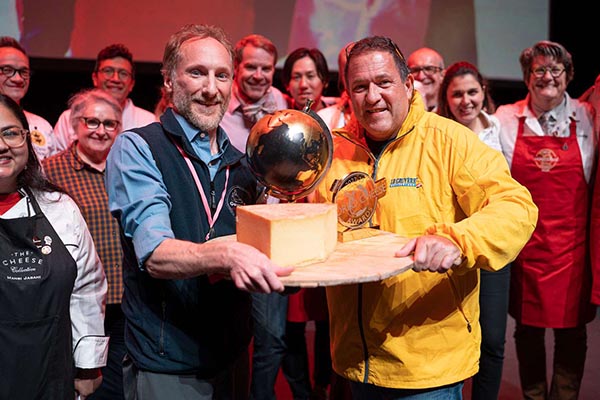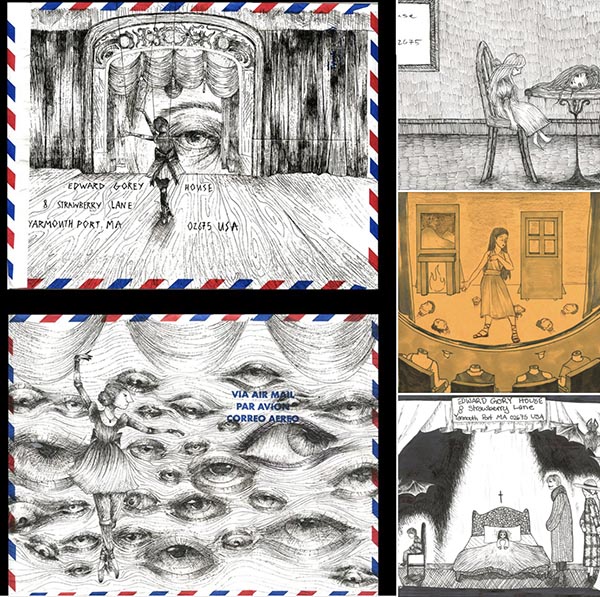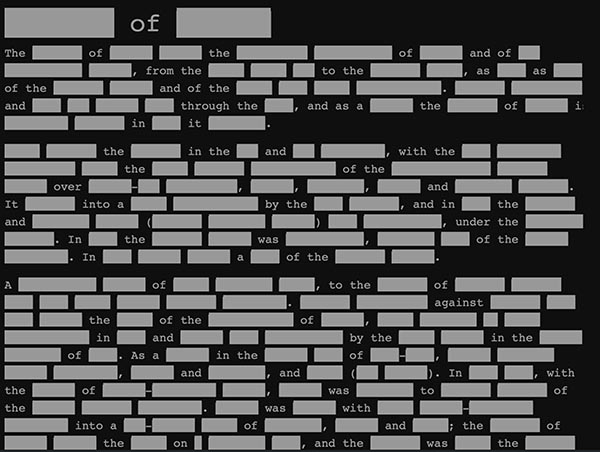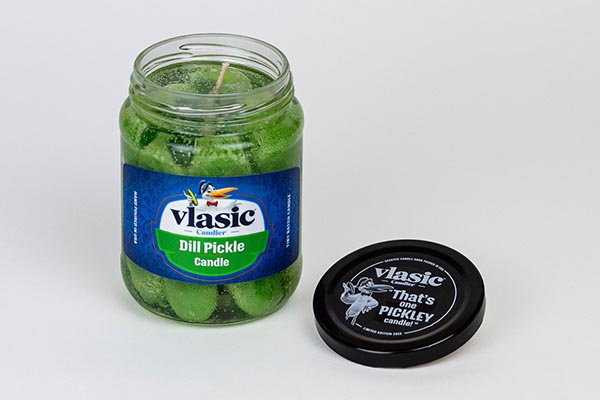This Cheese Stands Alone
We know, we know, the industry media has been sated with post-PRINTING United coverage, the Pinnacle Awards, and the various packaging shows. But lost in all of this is one vital piece of information: what won Best Cheese for 2022? Well, Around the Web has you covered. Says Food & Wine:
On Wednesday, 250 international judges made up of cheesemakers and mongers, chefs, writers, and more, descended onto Wales to participate in the World Cheese Awards and crown a new winner. After tasting thousands of entrants (4,434 to be exact), Le Gruyère AOP surchoix, a matured gruyèremade from raw cow's milk from Switzerland, won the top prize.
Entered by Swiss cheesemaker Vorderfultigen and affineur (refiner) Gourmino, the cheese was described by the judges as a “really refined, hand-crafted cheese,” noting it melts in your mouth with just the right notes of herbs, fruits, and leather.
Leather? Anyway, commented Dennis Kaser, international marketing manager of Le Gruyère AOP:
“This is a result that shows the quality behind all these people working together; 1900 milk producers, 155 cheesemakers, and 11 refiners. This collaborative work results in such a high-quality cheese style, which is loved by the consumer,” Kaser said. “I’m so very proud to be representing Le Gruyère. Huge congratulations to cheesemaker Vorderfultigen and affineur Gourmino.”

As they say, “blessed are the cheesemakers.”
Life Sentence
Imagine yourself 3,000 years in the past, and as it happens a sentence you write will go down in history as the oldest sentence ever recorded in one of the world’s oldest alphabets. You’d want it to be something profound or portentous, like “What hath God wrought?” or even something that will stymie people in the distant future, like “Pound pastrami, can kraut, six bagels—bring home for Emma.” Or something like the set-up to an ancient Sumerian bar joke about a dog (and maybe with the punchline). As it happens, though, archaeologists have indeed found the oldest sentence on a comb in Israel. In Canaanite, the 17-character sentence reads “May this tusk root out the lice of the hair and the beard.” Says Gizmodo:
The comb was found on the site of Tel Lachish, a Bronze Age settlement about 25 miles from Jerusalem. It’s about 1.38 inches by 0.98 inches, though its teeth have long since broken off. Details of the script’s characters and meaning were published today in the Jerusalem Journal of Archaeology.
…According to Garfinkel’s team, the comb’s markings are the first entire sentence written in the Canaanite language, one of the first known alphabets. (The Sumerians and Egyptians had even older scripts.)
Canaanite inscriptions—not entire sentences—have been found before, and Tel Lachish seems to have more than any other site in Israel. Time will tell what other ancient writing is waiting to be found.
Gorey Details
Back in April, the Edward Gorey House—celebrating the macabre illustrator Edward Gorey—kicked off its 2022 All-Ages Envelope Art Contest, which closed in mid-October. This year’s contest theme was “Act II/Scene I”: “Artists are invited to fill an envelope-shaped stage with a story of their own devising—and we’re getting dropped into the middle of it.” The museum’s Facebook page has started displaying some of the entries:

It’s Not the Heat, It’s the Humidifier
Via Core77, designer Jiaming Liu for an MA Graduation Project, at Folkwang University of the Arts in Germany, has created a 3D-printed clay humidifier made from industrial waste (that is, discarded clay).
The unique 3D printing structure not only greatly improves the water absorption efficiency, but also the water absorption part and the water storage part do not need to be separated and can be printed in one piece.
It made of recycled ceramic powder [known] as clinker, in a ratio of 1:3. The recycled ceramic powder here can not only improve the strength and water absorption of the structure, but also after the service life of the product, the product can be continue [to be] used as recycled clinker. The project aims to explore the use of sustainable materials and possible applications for 3D printing clay.

In the previous project, the model was made of concrete, but in the material experiment, I found that the porous clay/ceramic had Stronger water absorption and more modeling possibilities, so the idea of further exploration with clay was born.
During the Semester in Folkwang, I conducted a series of tests on printing technology and recycled materials by using the printing ceramic machine provided by the school's ceramic workshop and learning about the problem of industrial waste generated by ceramics. After exploring more possibilities, the current project was finally formed.
Pretty neat.
Graphene Gets Active
Was it a good week for graphene news? It’s always a good week for graphene news! Menswear brand FIOBOC launched a line of graphene-enhanced activewear comprising sweatshirts and jackets in a range of naturally dyed colors. Says Graphene-Info:
Using graphene in the fabric of FIOBOC’s new collection allows it to keep warmth and comfort for wearers. The graphene fabric can reportedly insulate heat to reduce heat loss from the human body to ensure the wearer is kept warm.
FIOBOC stated that the “new collection is created with an athleisure style. While promoting comfort, the simple but stylish design makes it perfect for daily wear at work or home, working out at the gym, or going out motorcycling. Paired with a denim jacket or a snow jacket, it will be an ideal choice for camping or mountain climbing”.
Fast Furniture
Cary Sherburne has written often about the environmental perils of “fast fashion”—and now, as per the New York Times, we have “fast furniture” to worry about.
Fast furniture, which is mass-produced and relatively inexpensive, is easy to obtain and then abandon. Like fast fashion, in which retailers like Shein and Zara produce loads of cheap, trendy clothing that’s made to be discarded after only a few wears, fast furniture is for those looking to hook up but not settle down. It’s the one-season fling of furnishings.
Many of the Ikea beds and Wayfair desks bought during the Covid-19 lockdown were designed to last about five years, said Deana McDonagh, a professor of industrial design at the University of Illinois, Urbana-Champaign. “I relate to fast furniture like I do to fast food,” Ms. McDonagh said. “It’s empty of culture, and it’s not carrying any history with it.”
… Each year, Americans throw out more than 12 million tons of furniture, creating mountains of solid waste that have grown 450 percent since 1960, according to the Environmental Protection Agency. Bits of tossed furniture can be recycled, but the vast majority ends up in landfills.
As with fashion, some sustainability-oriented companies are trying to change things.
Kaiyo, an online marketplace for pre-owned furniture, was founded in 2014 and says it has since kept more than 3.5 million pounds of furniture out of landfills. Those with furniture to unload can offer it to Kaiyo, and if the company accepts — Alpay Koralturk, the chief executive, said the company purchases about half of the pieces offered to them — it’ll get picked up for free and the seller will get a check. Buyers can shop the online marketplace, and know that items shown online are always in stock.
…Fernish, a rental furniture subscription service, allows customers to pay month-to-month for items from brands like Crate & Barrel, always with the option to buy outright. The service says it has saved more than 1 million pounds of furniture from landfills.
As Cary might say, what’s in your living room?
Fill in the Blanks
Wordle and its many variants seem to have faded into the background, but for those still looking for entertaining word games that end in “le,” there is now Redactle:
Redactle is a daily browser game where the user tries to determine the subject of a random obfuscated Wikipedia article, chosen from Wikipedia's 10,000 Vital Articles (Level 4).
A new puzzle will be available every day at 11:00 AM CDT (16:00 UTC).

It sounds impossible, but supposedly gets easier the more words you guess, which would make sense. If the subject of a Redactle is “pterodactyl,” would that make it a pterodactle?
AI-Yi-Yi Part the Infinity: Turkey Day
We know that AI can now create photos and other images, movies, prose, poetry, fine art…but what about recipes? Can AI help you experiment in the kitchen? Well, says the New York Times, machines are now starting to write recipes:
These recipes have all the components of their handmade forebears: lists of ingredients, precise measurements, step-by-step instructions and introductory notes with (fabricated) personal touches. Their advantage, in theory, is that they draw on a vast trove of online information about food and cooking.
But are they any good—or even edible? After all, Futurama has shown us what can happen when robots cook. The Times tasked artificial intelligence—specifically, a technology called GPT-3—to come up with a Thanksgiving menu, which they then cooked and presented to four New York Times cooking columnists. Click through to the article for in-depth detail about how the technology works, but here’s the upshot:
after logging into GPT-3 on my laptop, I typed: “I am originally from Texas, and I grew up in an Indian American household. I love spicy flavors, Italian and Thai food, and desserts that are not too sweet. Some ingredients I frequently cook with are chaat masala, miso, soy sauce, herbs and tomato paste
… Some of the ingredient lists seemed questionable. The naan stuffing called for 32 different components, including two cups of dried fruit. Most of the recipes were suspiciously light on salt and fat. Still, I was hopeful.
Cooking and tasting the recipes all but dashed that hope.
The cake was dense and more savory than sweet. The naan stuffing tasted like a chana masala and a fruitcake that had gotten into a bar fight. The roast turkey recipe called for a single garlic clove to season a 12-pound bird, and no butter or oil; the result was dry and flavorless.
The chaat, laced with cilantro and baking spices, was a grassy-flavored mush. The green beans and the cranberry sauce were edible but unremarkable.
Our taste-tasting columnists were even less kind.
“We’re not out of a job,” Melissa Clark said. “I don’t feel anything eating this food,” Yewande Komolafe added.
Genevieve Ko summed it up best: “There is no soul behind it.”
The AI was also tasked with generating images of the dish:

Of course, some humans can generate the same results. So it looks like the catering industry is safe…for now.
Weird AI
Speaking of AI, this headline from Vice may or may not be alarming: “Scientists Increasingly Can’t Explain How AI Works.” The analogy they start with is that humans can’t always explain why they like certain things such as, say, “What’s your favorite ice cream flavor and why?” Likewise:
The people who develop AI are increasingly having problems explaining how it works and determining why it has the outputs it has. Deep neural networks (DNN)—made up of layers and layers of processing systems trained on human-created data to mimic the neural networks of our brains—often seem to mirror not just human intelligence but also human inexplicability.
AI systems are generally “black boxes,” “systems that are viewed only in terms of their inputs and outputs.” No one is particularly interested in what goes on inside that black box, as long as they get the output they’re looking for. Or, in other words, like the way print buyers don’t generally care what kind of printing press or ink technology you use as long as their prints come out looking the way they expect them to.
These types of AI systems notoriously have issues because the data they are trained on are often inherently biased, mimicking the racial and gender biases that exist within our society. The haphazard deployment of them leads to situations where, to use just one example, Black people are disproportionately misidentified by facial recognition technology. It becomes difficult to fix these systems in part because their developers often cannot fully explain how they work, which makes accountability difficult. As AI systems become more complex and humans become less able to understand them, AI experts and researchers are warning developers to take a step back and focus more on how and why a system produces certain results than the fact that the system can accurately and rapidly produce them.
Ultimately:
…“if we grow accustomed to accepting AI’s answers without an explanation, essentially treating it as an Oracle system, we would not be able to tell if it begins providing wrong or manipulative answers.”
We don’t always want to know how the sausage is made, but we may have to.
Through These Walls
Well this is creepy. From Gizmodo:
Using a $20 off-the-shelf drone, researchers at the University of Waterloo in Ontario have created what is effectively an airborne scanning device that can triangulate the location of every WiFi-connected device in your house. Yikes.
“Yikes” is right. Dubbed “Wi-Peep,” it was developed by Ali Abedi and Deepak Vasisht, who recently presented their findings at the 28th Annual International Conference on Mobile Computing and Networking. What does it do, specifically?
Wi-Peep engages in what researchers call a “location-revealing privacy attack” that can manipulate the data in WiFi networks and use it to “see through walls,” or, rather, approximate the location of devices via sneaky scanning.
What are the implications of this thing?
Researchers imagine some pretty creepy scenarios involving Wi-Peep’s clandestine collection of data. Abedi and Vasisht worry that a hacker armed with this device could potentially “infer the location of home occupants, security cameras and even home intrusion sensors.”
Taking it one step further, they imagine an intruder:
A burglar could use this information to locate valuable items like laptops and identify ideal opportunities when people are either not at home or away from a specific area (e.g., everyone is in the basement) by tracking their smartphones or smartwatches.
Of course, would-be ne’er-do-wells can already figure these things out simply by casing the joint, and we’re not sure what the overlap is between the typical burglar and someone adept at hacking into one’s WiFi network, but still. The point of the research was not to be creepy or larcenous, but to help prevent creepiness and larceny.
Abedi and Vasisht say they hope their research leads to the development of better protections for WiFi protocols, so that future iterations aren’t as vulnerable to attack as the current ones. “We hope that our work will inform the design of next-generation protocols,” the researchers write.
Uh huh.
Orange Alert
Fans of the cult 1960s British “spy-fi” series The Prisoner may have been reminded of everyone’s favorite terrifying white balloon Rover, who kept denizens of The Village in line, when an outdoor art installation, buffeted by heavy winds, broke apart and sent giant orbs tearing through central London.
Two massive runaway Christmas baubles were spotted wreaking havoc through central London https://t.co/SH1vDgfBj3 pic.twitter.com/7vqp7Ggesw
— philip lewis (@Phil_Lewis_) November 2, 2022
Boing Boing helpfully compares the baubles to Rover from The Prisoner:
In a Pickle
Next Monday, November 14, is apparently National Pickle Day, and to commemorate the occasion Vlasic has created a scented candle that looks and smells like a jar of pickles. Says Food & Wine:
Yes, Vlasic and the candle brand Candier have partnered on a 100-percent wax candle that looks like a real jar of Vlasic Original Dill Wholes and smells, well, like a real jar of Vlasic Original Dill Wholes. "It was a no-brainer for us," Brett Castle, Vlasic’s brand director, stated. "We are thrilled to have partnered with Candier by Ryan Porter to bring to life the first ever candle that looks and smells just like a jar of pickles."
The manufacturing process put Candier in, well, a bit of a pickle:
Krysten Kauder, founder of Candier, explained. “But doing that posed several big challenges. Everything had to be done by hand, including the placement of the pickles and pouring of the wax. Getting the pickles to look like they’re floating in clear liquid was also really tough. After lots of rounds of research and testing, our team nailed it.”

Photo: Candier By Ryan Porter
This Week in Printing, Publishing, and Media History
November 7
1665: The London Gazette, the oldest surviving journal, is first published.
1837: In Alton, Ill., abolitionist printer Elijah P. Lovejoy is shot dead by a mob while attempting to protect his printing shop from being destroyed a third time.
1874: A cartoon by Thomas Nast in Harper’s Weekly is considered the first important use of an elephant as a symbol for the United States Republican Party.
1897: American director, producer, and screenwriter Herman J. Mankiewicz (Citizen Kane) born.
1913: French novelist, philosopher, journalist, and Nobel Prize laureate Albert Camus born.
1914: The first issue of The New Republic is published.
1929: The Museum of Modern Art opens to the public in New York City.
1943: Canadian singer-songwriter and guitarist Joni Mitchell born.
1967: U.S. President Lyndon B. Johnson signs the Public Broadcasting Act of 1967, establishing the Corporation for Public Broadcasting.
1981: American historian and philosopher Will Durant (The Story of Civilization) dies (b. 1885).
1994: WXYC, the student radio station of the University of North Carolina at Chapel Hill, provides the world’s first internet radio broadcast.
2016: Canadian singer-songwriter and poet Leonard Cohen dies (b. 1934).
November 8
1602: The Bodleian Library at the University of Oxford is opened to the public.
1674: English poet and philosopher John Milton dies (b. 1608).
1847: Irish novelist Bram Stoker (Dracula) became undead born.
1898: Canadian-American actress and singer Marie Prevost born. (Despite the story in Kenneth Anger’s Hollywood Babylon (and a song by Nick Lowe) Prevost was not eaten by her dog.)
1918: German typographer and calligrapher Hermann Zapf born.
1972: HBO launches its programming, with the broadcast of the 1971 movie Sometimes a Great Notion, starring Paul Newman and Henry Fonda.
1973: The right ear of John Paul Getty III is delivered to a newspaper together with a ransom note, convincing his father to pay US$2.9 million
November 9
1818: Russian author and playwright Ivan Turgenev born.
1914: Austrian-American actress and inventor Hedy Lamarr (not Hedley) born. (During World War II, Lamarr and composer George Antheil developed a radio guidance system for Allied torpedoes, unused at the time, but the principles of which were incorporated into Bluetooth technology and are similar to methods used in legacy versions of CDMA and Wi-Fi.)
1934: American astronomer, astrophysicist, and author Carl Sagan born.
1953: Welsh poet and author Dylan Thomas dies (b. 1914).
1967: The first issue of Rolling Stone magazine is published.
November 10
1728: Irish novelist, playwright and poet Oliver Goldsmith born.
1947: English singer-songwriter, guitarist, and producer Greg Lake born.
1969: National Educational Television (the predecessor to the Public Broadcasting Service) in the United States debuts Sesame Street.
1983: Microsoft introduces Windows 1.0.
November 11
1675: Gottfried Leibniz demonstrates integral calculus for the first time to find the area under the graph of y = ƒ(x).
1821: Russian novelist, short story writer, essayist, and philosopher Fyodor Dostoyevsky born.
1855: Danish philosopher, author, and poet Søren Kierkegaard dies (b. 1813).
1922: American novelist, short story writer, and essayist Kurt Vonnegut born.
November 12
1945: Canadian singer-songwriter, guitarist, and producer Neil Young born.
1980: The NASA space probe Voyager I makes its closest approach to Saturn and takes the first images of its rings.
1990: Tim Berners-Lee publishes a formal proposal for the World Wide Web.
November 13
1850: Scottish novelist, poet, and essayist Robert Louis Stevenson born.










Discussion
Join the discussion Sign In or Become a Member, doing so is simple and free